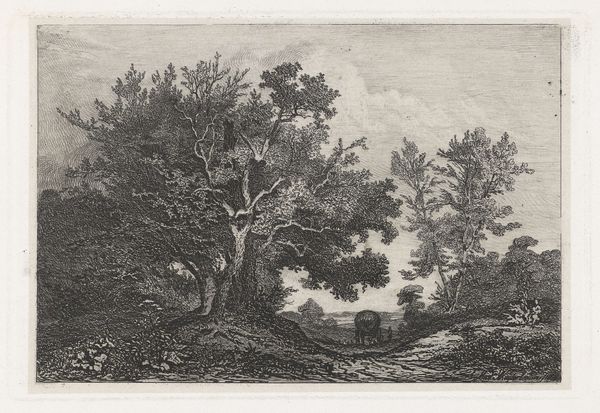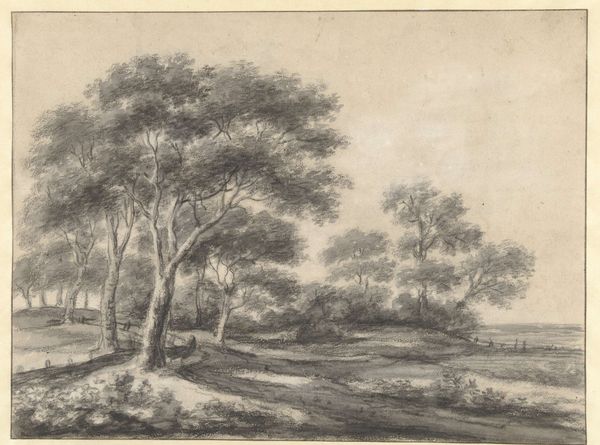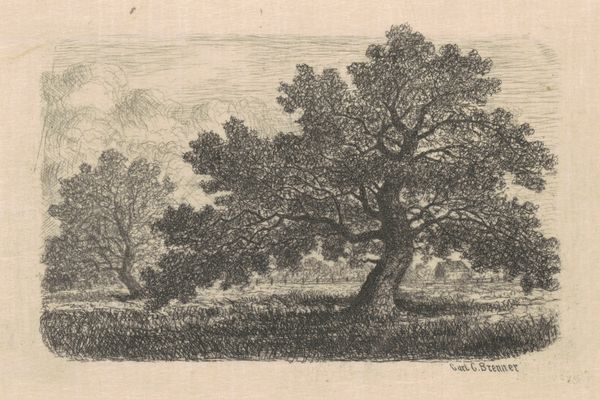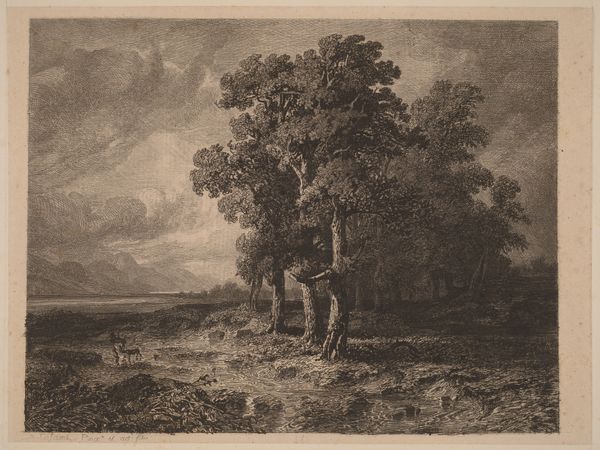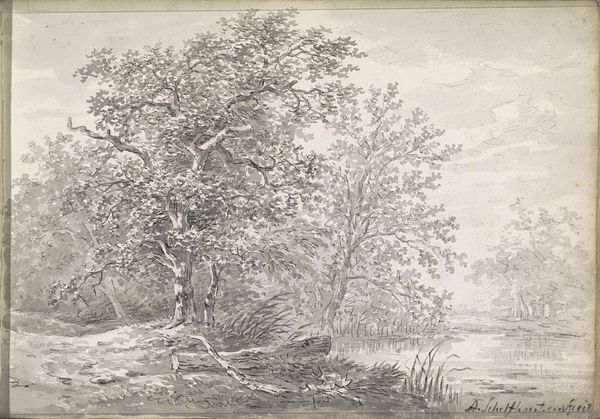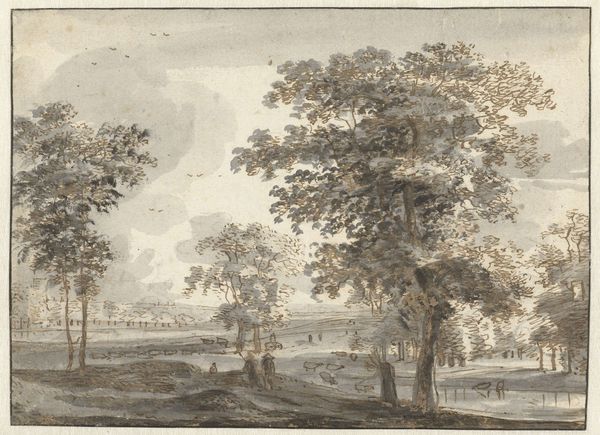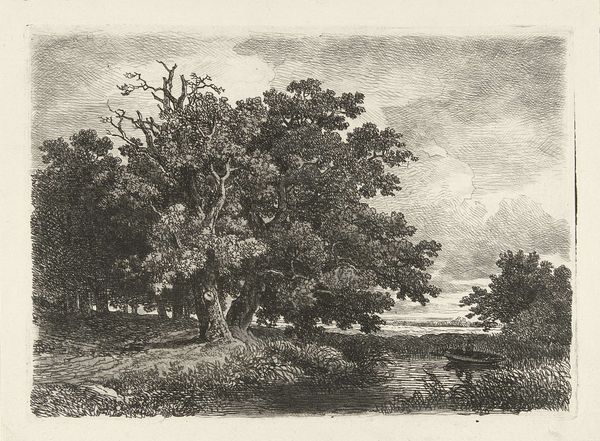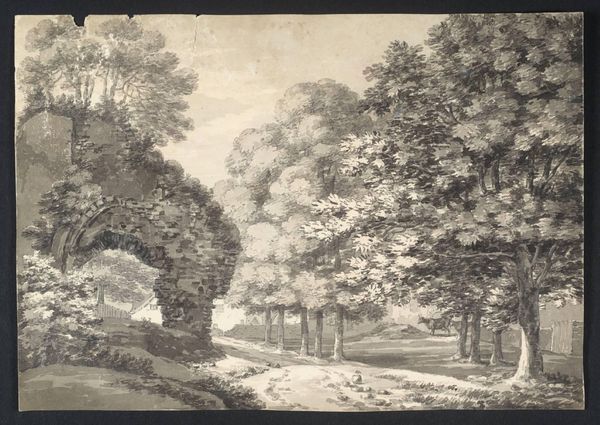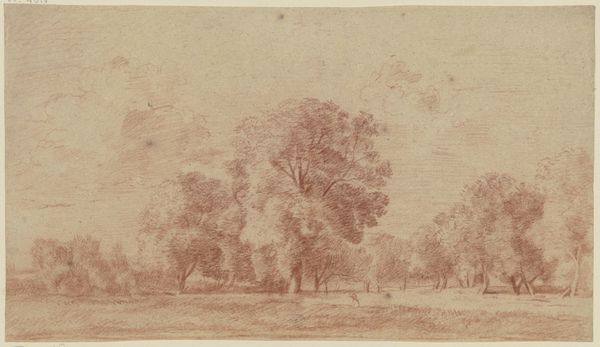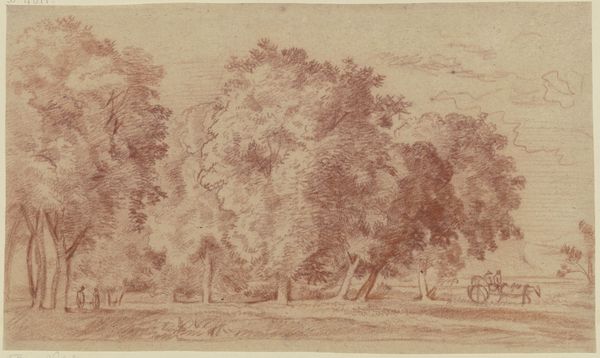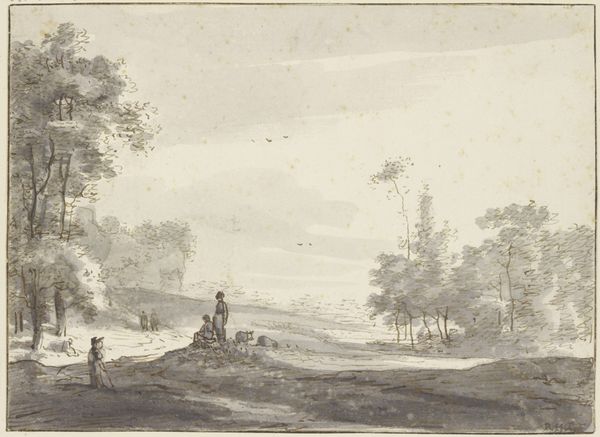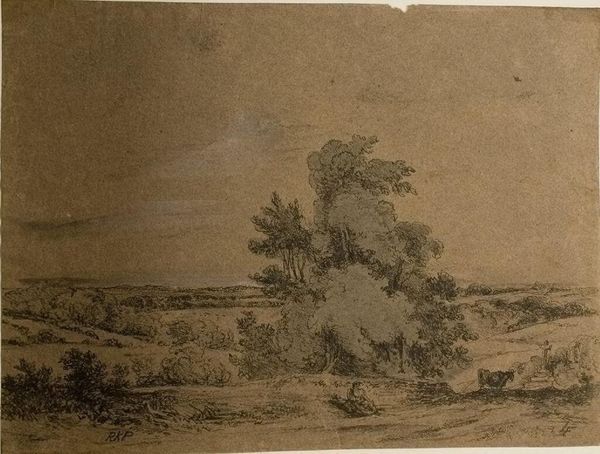
Dimensions: 12 5/8 x 16 5/8 in. (32.1 x 42.3 cm)
Copyright: Public Domain
Editor: Here we have Camille Corot’s "Landscape," a charcoal drawing created sometime between 1850 and 1875. The hazy quality makes it seem dreamlike, almost a memory of a landscape rather than a depiction of one. How do you interpret this work? Curator: This drawing is ripe with symbols connected to Romanticism's fascination with nature and memory. Consider the prominent tree: in art, the tree is not merely botanical. Often it represents rootedness, family, or the self. Given Romanticism's focus on the individual and their emotional experiences, how might Corot be using the tree to speak to those ideas? Editor: So, the tree could represent a kind of personal connection to nature? Curator: Precisely! And notice how the figures are almost absorbed into the landscape. This could signify the individual's smallness, but also their intimate connection to the vastness of nature. Editor: It almost feels like they are disappearing into the landscape. The scene almost becomes less about humanity. Curator: You have keyed into another interesting consideration here. By making those details hazy, how might the artist be attempting to express something universal, maybe an enduring human connection with nature beyond place and time? Think of how archetypes work. What is your experience in that sense? Editor: That makes sense! I never thought about landscape drawing having that sort of power! Thank you for sharing your insights! Curator: It has been a fascinating conversation, looking at familiar terrain and discovering fresh paths to navigate them.
Comments
No comments
Be the first to comment and join the conversation on the ultimate creative platform.
